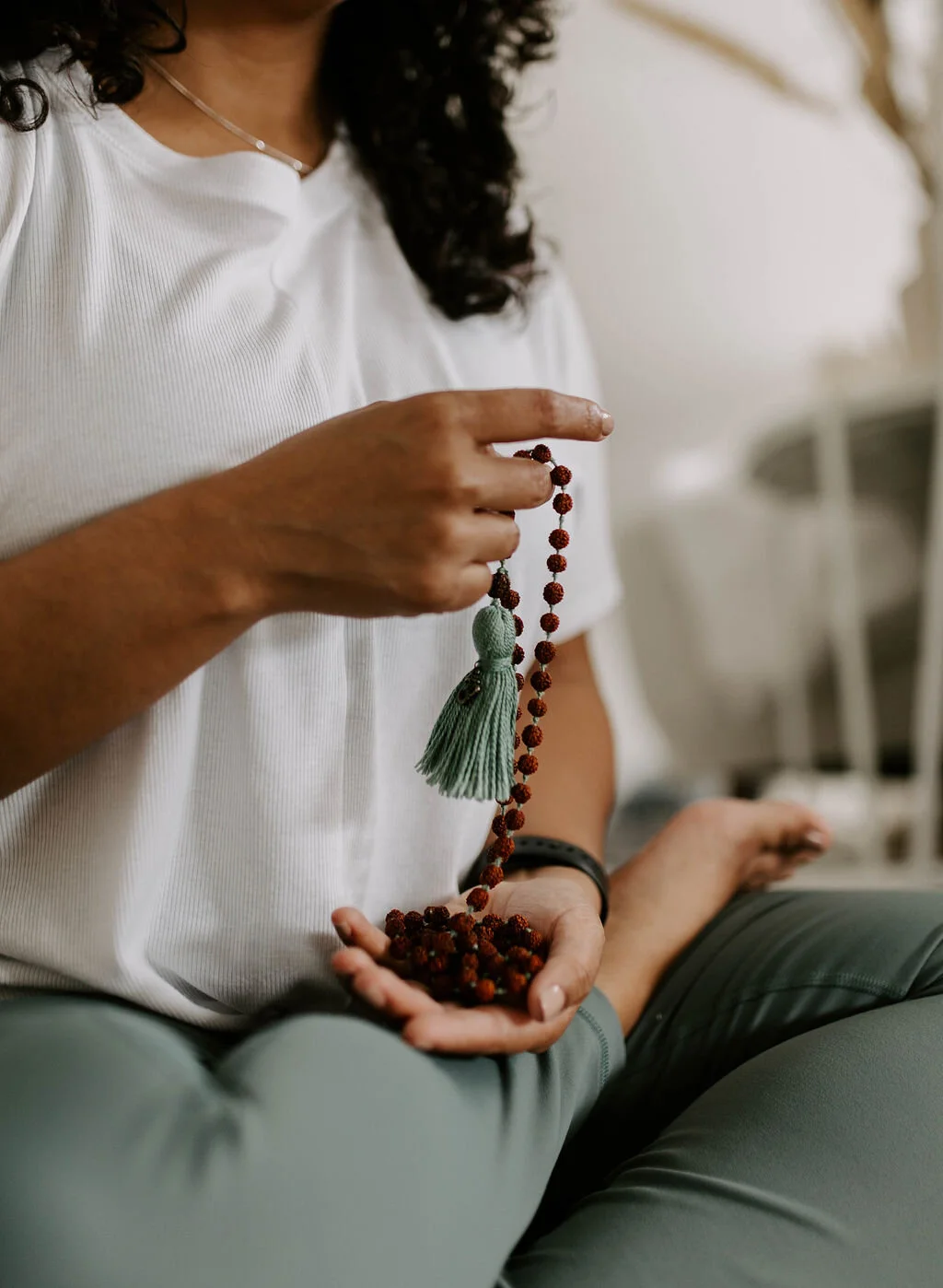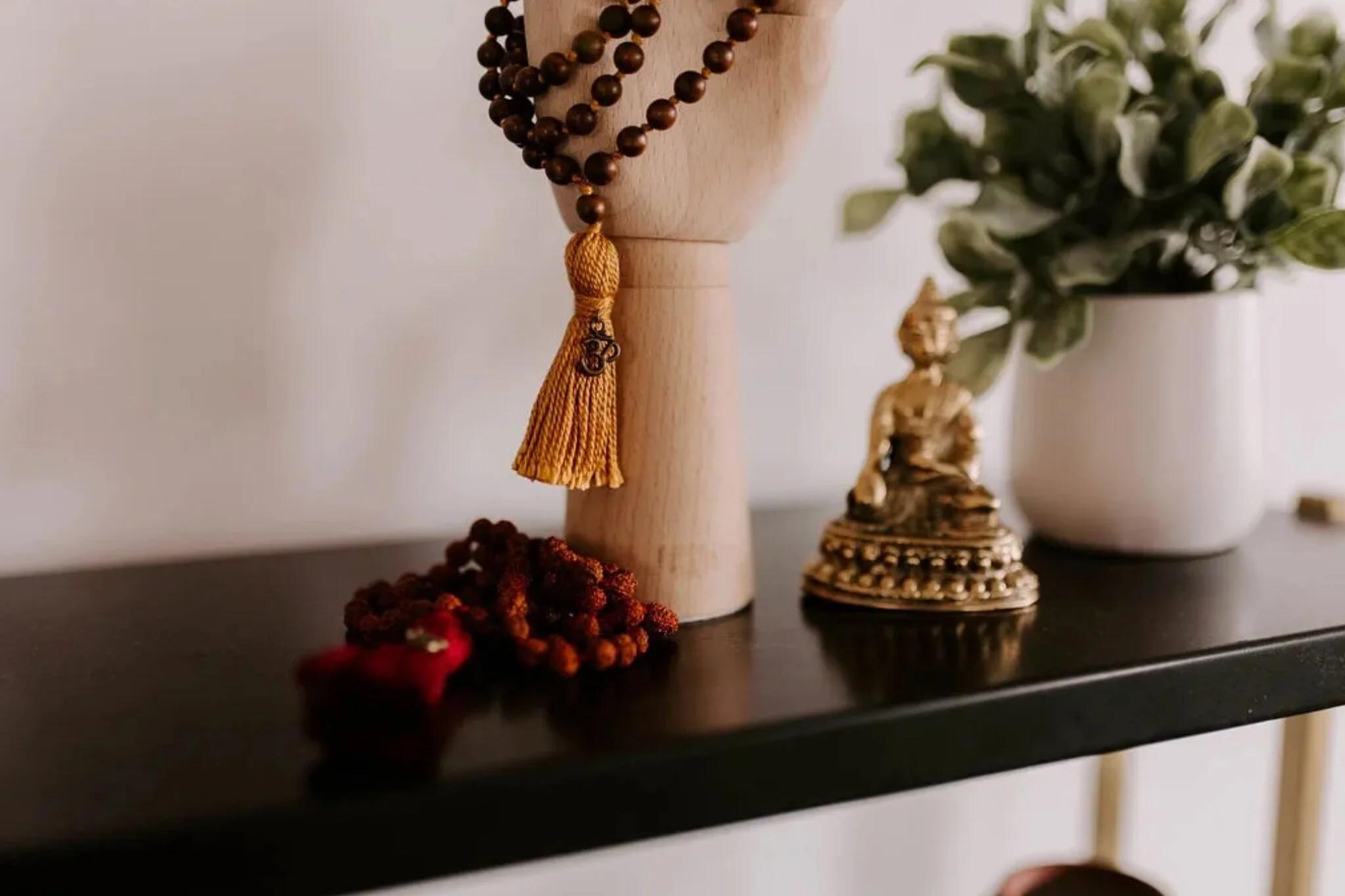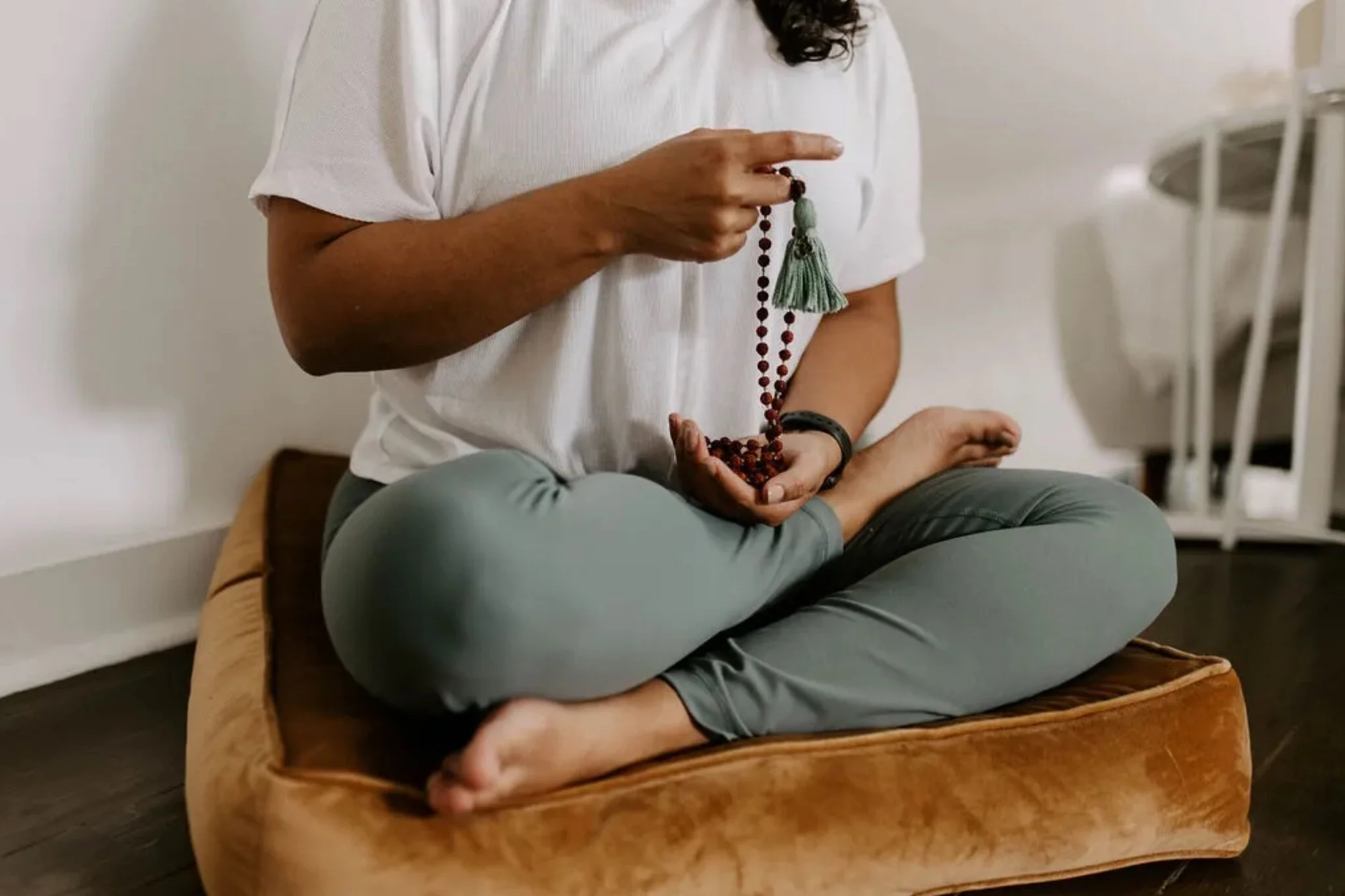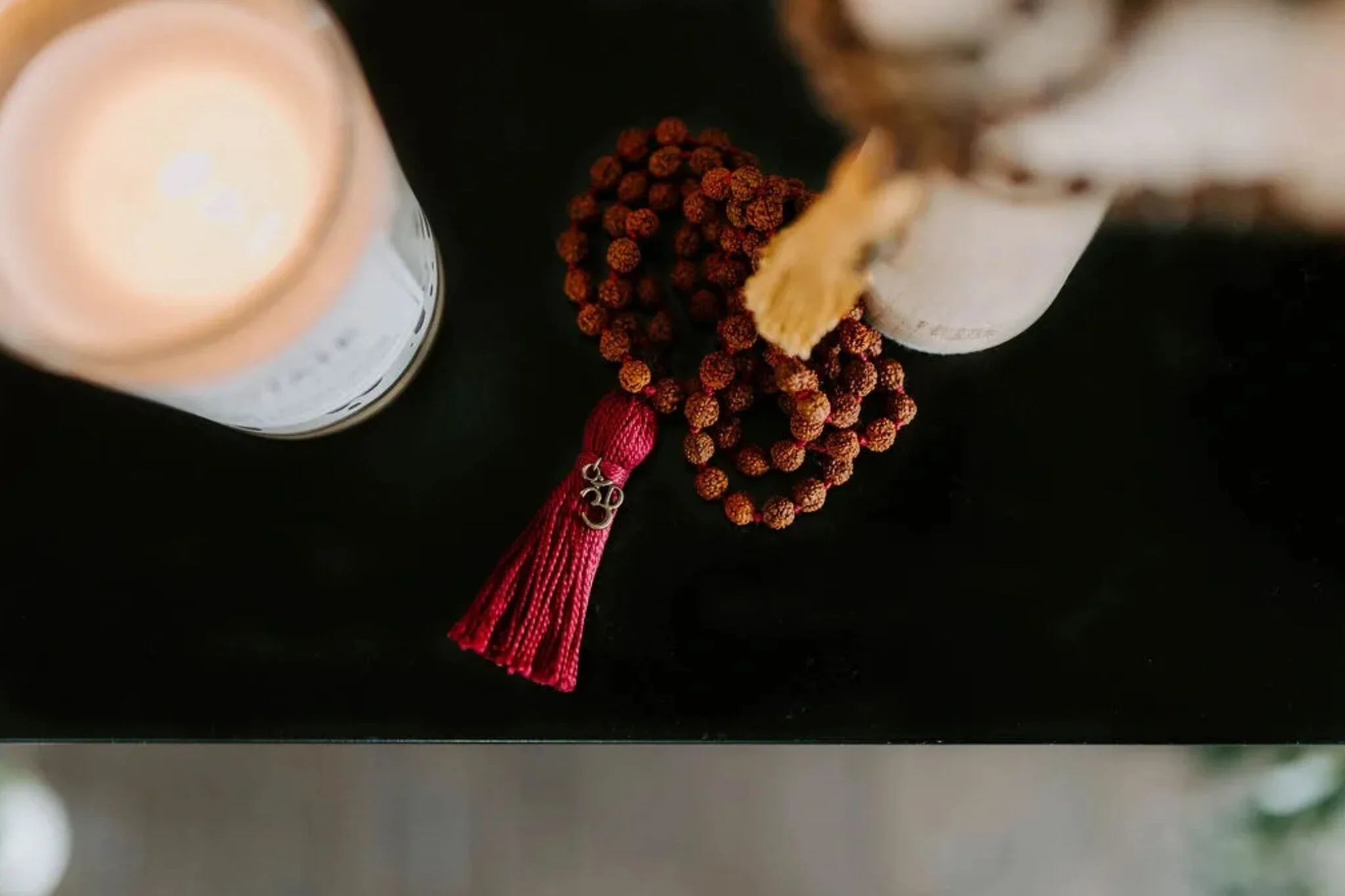
The Mala Workshop: Practice Guide
THANK YOU FOR JOINING ME IN THIS ADVENTURE!
Now is the time to start your own practice at home. I hope this little guide helps you establish your personal practice.
How to close your Mala?
Here is a short video on what to do to close your Mala. If you have any questions, please contact me at info@gabymyt.com
How to set a sacred space for meditation?
The key to creating a home practice is to create a space where we can stop and sit to meditate. You don’t need an entire meditation room; a little corner or some space at your nightstand can do the trick. The important thing is to gather any sacred objects that might work for you as a reminder to take time to meditate. For example, in my little meditation space, I have my Malas, a candle, a palo santo stick, and a small Ganesh statue. You can have photos of your ancestors, fresh flowers, or your crystals. Remember, the point here is to have a visual reminder to pause and do your practice.
If you want more information about this topic, one of my favorite books is “Making Space” by Thich Nhat Hanh.
When is the best time to meditate?
Any time is a good time to meditate! But in my experience, it is better for developing the habit to do it approximately at the same time each day. For some people, the best time is first thing in the morning, after cleaning themselves and pouring a cup of tea or coffee. For me, it's after my morning yoga practice. I invite you to try it on different times during the day a few times and see which one suits you the best.
How to wear your Mala?
Malas are so much more than beautiful pieces of jewelry. They are sacred tools and we must use them with respect. In your daily life, you can wear your Mala around your neck or wrist to remind you of your intention. In Hinduism, Malas must be worn only in the right hand because the left hand is associated with impure activities. But other traditions use them on the right or left hand indistinctively.
How to take care of your new Mala?
Your Mala may need occasional physical and energetic cleansing.
Some tips to keep your Mala looking at its best and to avoid premature breakages are:
Do not wear your Mala while you sleep
Do not wear your Mala in the shower, bath, or pool. Your Mala is made of sandalwood and 100% cotton yarn. They don’t like to be wet
Avoid placing your Mala directly on the floor or any other unclean surfaces
When you’re not wearing your Mala or using it during meditation, I recommend storing it in its bag
Wipe it with a slightly damp soft cloth and dry it immediately but only when absolutely necessary
Your Mala may need an energetic cleansing from time to time. There are a few different ways to do this and these are some of my favorites:
Place your Mala under the moonlight for a few hours, especially during a full moon
Burn sage or palo santo over your Mala. I included a palo santo stick in your goodie bag
Place your Mala in a singing bowl and ring the edges a couple of times
What to do with a broken Mala?
A broken Mala could mean that your intention is no longer what you need in your life and it could be time to establish a new one. You can clean, physically and energetically, the original beads and re-string them in a new Mala. After that, just set a new intention and continue using it normally.
How to choose a Mantra?
Malas can be used to count your breath or mantra. A mantra is a sound, word, or phrase that we use to focus the mind during meditation. The sound "OM" is the most common mantra, but you can find thousands of examples on the Internet. You can also create your own mantra, based on your intention or current situation. Some examples of simple personal mantras can be "I am loved,” "I am calm,” and "I am enough", just to name a few. Get creative and choose a mantra that represents you and your intention.
How to use your Mala for meditation?
Different traditions use Malas in different ways. And you can use yours in the way that is most natural and comfortable to you. Here, I will show you the way my teacher taught me and what I have been doing for the past six years.
1. Sit comfortably
2. Hold your mala in your right hand between your middle and thumb (the index finger signifies the ego, that’s why we avoid holding the mala with that finger)
3. Let the rest of the beads rest in your left hand or hang freely but away from the floor or your feet
4. Start counting by the first bead at the right of the Guru bead
5. Repeat your mantra, out loud or in your head, use your thumb to move one bead towards you, and go to the next bead
6. After completing your 108th repetition, do not go over the Guru bead. Spin your Mala and now, that last bead becomes the first for the next round
7. After completing your meditation, allow yourself to sit with the remainder vibration of the mantra for a few breaths and slowly come back to your day
Here is a link to a short video from Howcast for a more visual explanation.
Guided Japamala Practice
I have recorded these three guided meditations to help you use your mala for mantra repetition. This type of practice is great for beginners.
To start your practice, find a place where you can sit comfortably and, ideally, free from distractions. Begin by softening the gaze or closing the eyes, and bring your awareness to breathe for a minute or two. When you feel ready, start to repeat the mantra of your choice.
When you finish, allow yourself to sit for a few rounds of breath with the remainder vibration of the mantra. Then, gently and slowly invite movement to the body and open your eyes.
Happy meditation!
OM
The syllable OM is considered to be the primordial sound, the sound of the universe, the sound from which all other sounds are formed.
Chanting the mantra OM can help to calm the mind, slow down the breath, reduce stress and anxiety, and provide a foundation from which you can better connect to your Higher Self or the Divine, whatever this means for you.
OM SHANTI SHANTI SHANTIH
This mantra is an invocation of peace. The word Shanti means “peace”. This mantra can be literally translated as “OM Peace, peace, peace”. Shanti chanted three times, represents peace for the body, mind, and spirit.
Repeating the Shanti mantra can have a soothing effect on the mind and leap to deep relaxation.
OM GAM GANAPAYE NAMAH
Lord Ganesha is the elephant-headed Hindu god who is worshiped for his knowledge and wisdom. He is also known as the “remover of obstacles. This mantra can be translated as “Salutations to Lord Ganesha, the remover of obstacles”.
People use this mantra when they are ready for a new beginning and to remove obstacles, negativity, and fears.
Once again, thank you so much for being part of this workshop, and remember I am here for you!
With love,
Gaby





